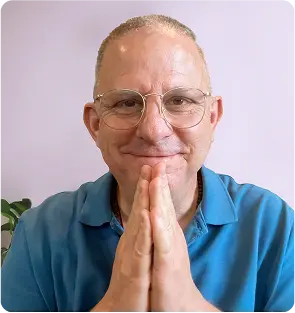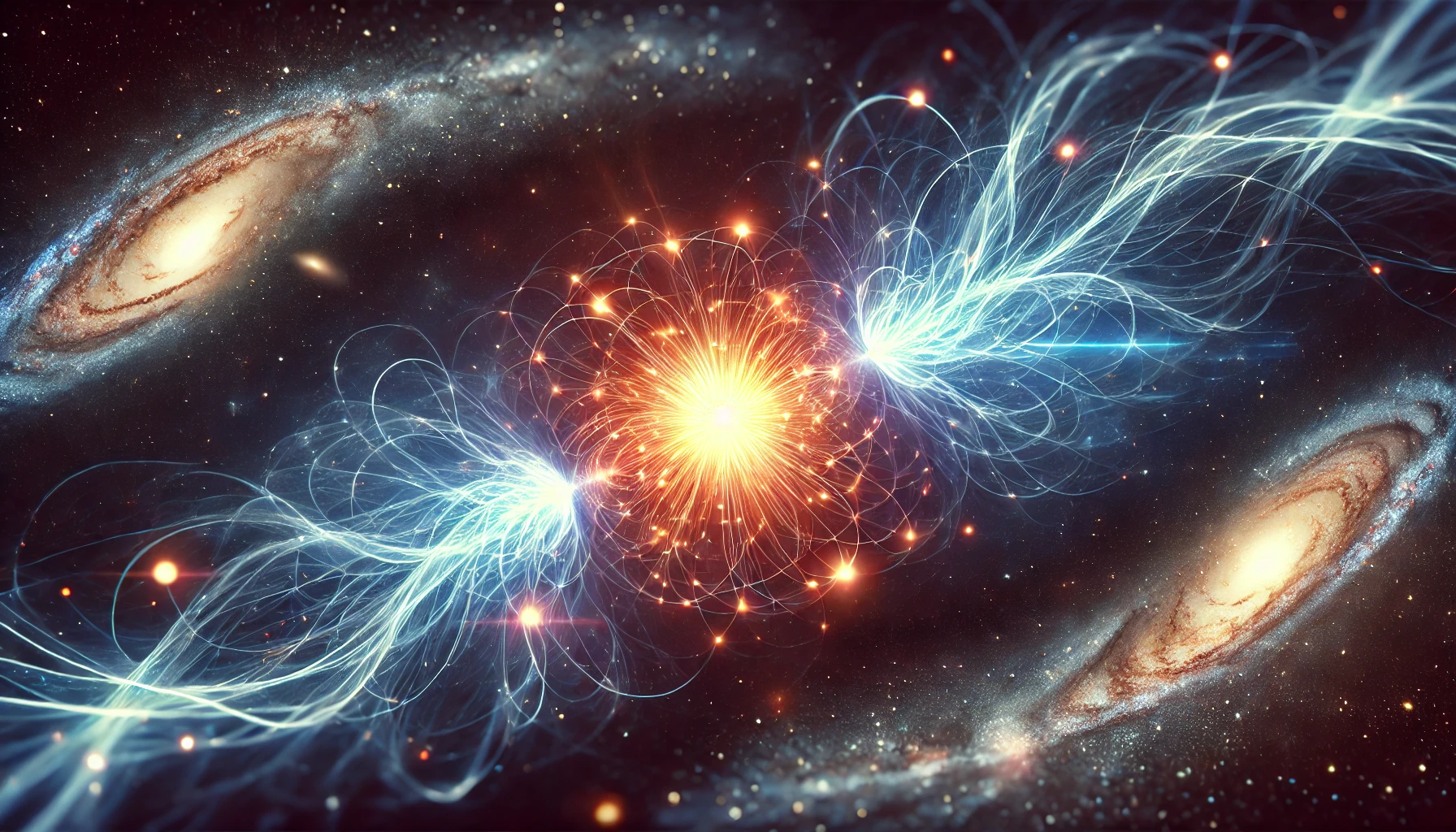
The concept of spiritual hospice describes how seekers can become trapped in comforting illusions. While new age spirituality often promises freedom, it can sometimes lead to toxic spirituality when truth is replaced by ego boosts.
In the age of social media and instant gratification, the realm of spirituality has undergone a transformation. What appears on the surface to be a journey toward enlightenment and Self-realization can devolve into a misleading and Self-indulgent escapade filled with mere crumbs from the ancient teachings rather than a truly nourishing meal.
“Education and information are growing, but knowledge and discrimination are decreasing.” — Amma
In the contemporary spiritual landscape, numerous influencers purvey quasi-spiritual wisdom and half-baked ideologies, presenting these offerings as divinely inspired. They tout their experience, often described in vague terms such as “for quite some time” or “for many, many years,” as a badge of expertise. Yet, one might question the depth and authenticity of their trendy, hyperbole-ridden resumes.
Many of these individuals appear to sidestep rigorous spiritual training and discipline, perhaps deterred by the demands of genuine scholarly pursuit or a genuine understanding of spiritual practices. Instead, they opt for a path that requires less effort and more self-aggrandizement.
This approach, possibly born out of a lack of guidance and an aversion to disciplined study, leads them to propagate their beliefs, drawing others into a cycle of superficial adherence rather than deep understanding.
This modern phenomenon, which might be termed “Spiritual Consumerism,” mirrors the impulses of a society inclined towards instant gratification and easy answers.
This unchecked circus can be seen as a “Spiritual Hospice,” where the allure of new-age ideologies and their charismatic leaders offers a false comfort of spiritual awakening and enlightenment. This seductive narrative, however, often bypasses the rich, complex tapestry of ancient wisdom, leaving seekers at a standstill, bereft of the opportunity for true spiritual advancement.
The irony of this movement lies in its underlying motives – far from the selfless dissemination of wisdom, it frequently serves the dual purposes of ego reinforcement and social validation for the influencer, at the expense of genuine spiritual growth for the follower. This creates a cycle where superficial engagement is celebrated, and deeper, more meaningful exploration is neglected, leading to a spiritual malaise masked as enlightenment.
In this context, the karma of such endeavors becomes evident, not as a contribution to the collective spiritual journey, but as a self-serving endeavor that capitalizes on the earnest search for meaning by many, offering not nourishment but rather a mirage of spiritual fulfillment.
Spiritual Hospice is very much what it sounds like: A misdirecting, medicating, intoxicating, and numbing process created to ease or remove a person’s understanding of the pain of their life, relationships, and reality, rather than encouraging them to dive deeper within your Self, inquire about it, fathom it all, and then embrace it all.
Spiritual Hospice is when the soul gives up on liberation and seeks the comforts of illusion through things that simply appear to be spiritually illuminating but are not. This path enables the soul to seek further comfort and then more comfort, thereby keeping her in endless cycles of suffering and separation from the path of self-realization.
The ego can obfuscate any aspect or reality, even our divine nature – until we awaken to the non-truth, illuminate into God’s love, and choose to expand into our liberated Self.
We must choose to embody I AM I WILL, I AM I WILL to break the egoistic and confusing chains that limit and imprison us.
You almost can’t blame the influencers and phonies out there – because most of them are hopped up on the cocaine of Spiritual Hospice as well. They’re only teaching what they have come to learn (without much effort). Oh, I masturbated in a post about an alien orb of light, and people liked it! I must be a spiritual leader! No, you’re just a liar selling spiritual porn.
Truth be told, brainwashers were long ago brainwashed themselves.
Each time someone is hooked on Spiritual Hospice, they inch deeper and deeper into the stage of arrogant denial. They begin to defend the candy they’ve been consuming for years, further embedding themselves in the mud of false identities and spiritual delusion.
As someone deeply immersed in the wisdom of The Dharma and the teachings of ancient sages, I feel compelled to share my perspective on the current landscape of spirituality today.
Having spent 34 years exploring and teaching in this space, I believe that true spiritual evolution and liberation are rooted in timeless wisdom and practices that transcend the ego and illusions.
This perspective informs my assertion about the pitfalls of what I term “spiritual candy,” the food we’re fed amid a global pandemic of a Spiritual Hospice.
A little candy now and again is fine, but, my heavens, it’s truly out of hand now.
The Allure of Spiritual Hospice in New Age Spirituality
Narcissistic new-age spiritual influencers flood social media platforms with colorful and captivating content. Their posts, often adorned with affirmations, spiritual buzzwords, and idyllic images, lure followers into a realm of apparent spiritual comfort, denying them the depth of teachings that could set them free.
These influencers promise an easy path to enlightenment, where Self-love, positivity, manifestation, and material wealth are just a click away. It’s an alluring mirage that beckons an oddly devoted crew who claim they seek solace, spiritual growth, and meaning in their lives. This form of new age spirituality often feels safe, but the comfort is part of the trap that defines spiritual hospice.
We might even say, “But I’ve been doing this for a long time. I’m a teacher and healer, so what I do must be correct.” And there you have it – the perfect embodiment of complete delusion.
Toxic Spirituality and the Dangers of Misdirection
Underneath the facade of spiritual comfort lives a potent force of misdirection. The emphasis on superficial aesthetics, material abundance, unbridled creativity, and Self-centered spirituality can distract followers from the real work of Self-discovery and Self-realization.
True spiritual growth requires introspection, facing one’s shadow Self, dissolving projections into the past and future, extinguishing attachment, and embracing discomfort and uncertainty.
Spiritual hospice, however, encourages followers to avoid these essential steps – as if some miraculous process involving looking in the mirror and saying how pretty we are will purify our karma and liberate us. It won’t.
New Age Spirituality, Spiritual Candy, and Ego Boosts
Spiritual hospice serves a steady diet of “spiritual candy” to its followers. These are nuggets of wisdom and encouragement that feel good in the moment but lack the substance required for genuine growth.
Followers are bombarded with messages that boost their egos, telling them they are already enlightened and perfect just as they are. While this may provide temporary comfort, it hinders the deeper journey toward Self-awareness, and more importantly, Self-reliance – the REAL foundation of Spiritual Warriorship.
Meanwhile, some of these spiritual aspirants read a post based in ancient teachings, and they are so triggered by it, that they can barely communicate. Instead, they blame the teaching. They can barely fathom looking at how they were triggered by their own addiction to the nonsense they’ve been consuming.
How Spiritual Hospice Prevents True Spiritual Evolution
The most insidious aspect of Spiritual Hospice is preventing true spiritual evolution. Followers become complacent, basking in the glow of their supposed spiritual prowess and possible superiority.
They may mistake spiritual materialism for genuine growth, collecting crystals, attending workshops, and amassing followers while missing the essential inner work required for Self-realization. A pretty rock will only get you so far, which isn’t very far at all.
Unlike the weeks or months leading up to our physical deaths, we can die in this world to our egos, minds, and illusions without any spiritual candy. In fact, where traditional hospice helps people transition to the next place, Spiritual Hospice blocks every door, removing the ability for a seeker to choose a path to her liberation.
Avoiding Toxic Spirituality and the Trap of Spiritual Hospice
To avoid falling into the trap of Spiritual Hospice and embark on a genuine path of Self-realization, individuals can take several key steps, which include Sadhana.
Sadhana is a Sanskrit term commonly used in Hinduism, Buddhism, and other Indian spiritual traditions. It refers to a dedicated and disciplined spiritual practice or regimen undertaken by individuals to achieve spiritual growth, self-realization, or enlightenment. Sadhana encompasses a wide range of spiritual activities and practices, and its specific nature may vary depending on the tradition, teacher, or individual practitioner.
Question Everything External: Be critical of influencers and content that promise quick fixes and superficial spirituality. Authentic spiritual growth is a lifelong journey that requires effort, introspection, and discomfort.
Embrace the Shadow: True Self-realization involves facing one’s shadow Self—the parts of us that we often hide or deny. It involves Self-inquiry into the nature of the I Am, the I, and the Me.
Self-inquiry involves introspection and questioning the nature of the self. It is a method for gaining Self-awareness and transcending egoic attachments.
Embrace discomfort, confront your fears and insecurities, and be open to personal growth through challenges, discomfort, and the release of old emotions. Over time, if we are earnest in our efforts, we begin to free ourselves slowly.
Seek The Ancient Teachings: Focus on the ancient sages’ purest teachings and follow the enlightened spiritual gurus’ lineages. Avatars like Amma (Amma.org), Mother Meera, Anandamayi Ma, Paramahansa Yogananda, and Ramana Maharshi to name a few.
Practice Meditation: Regular meditation practice can help you stay grounded and connected to your inner Self. It fosters Self-awareness, emotional release, and genuine spiritual growth.
Prayer: Prayer can take various forms, including reciting specific mantras, prayers, or affirmations. It is a way to express devotion, seek guidance, or cultivate a deeper spiritual connection.
Yoga: Yoga asana practice, which involves physical postures and breath control, is a common element of sadhana. Yoga helps to balance the body and mind and prepares the practitioner for deeper meditation.
Chanting: Chanting sacred sounds, mantras, or hymns is a means of invoking spiritual energies, focusing the mind, and creating a meditative atmosphere.
Study of Scriptures: Many practitioners engage in the study of spiritual texts, scriptures, or teachings of enlightened masters as part of their sadhana. This intellectual aspect helps deepen one’s understanding of spiritual principles.
Fasting and Austerity: Some sadhanas may include periods of fasting, dietary restrictions, or other forms of physical austerity to purify the body and mind.
Selfless Service and Compassion: Engaging in selfless service (seva) and acts of compassion can be a crucial part of sadhana, as it helps to cultivate humility, empathy, and a sense of interconnectedness with all beings.
Pilgrimage: Undertaking spiritual journeys to sacred places or temples is a form of sadhana practiced by many devotees.
Sadhana is a way to transcend the limitations of the ego, gain self-realization, and attain a deeper understanding of one’s spiritual nature. The consistency and sincerity with which sadhana is undertaken are key factors in its effectiveness.
Beyond New Age Spirituality: The Essence of True Growth
The path to genuine spiritual evolution and Self-realization is not complicated, as it has been illuminated by sages throughout time. It involves practices deeply grounded in The Dharma and the ancient teachings that have guided seekers for centuries. These practices are not mere coping mechanisms but transformative modalities that lead us toward liberation.
The essence of these practices includes meditation, the release of emotions, dispelling illusions, cleansing desires before taking action, engaging in honest Self-inquiry, detachment from what doesn’t serve the pure Self, prayer, chanting, and a commitment to Sadhana (spiritual practices).
To truly evolve, we must discern what is best to consume. Discrimination around our rampant consumption of content determines our spiritual health.
Toxic Spirituality and Modern Influencers
Many spiritual influencers today offer content that may provide momentary comfort but often lacks ancient teachings’ depth and transformative power. If a spiritual practice does not transcend the small Self, ego, and mind, it becomes more of an ego or personality activity than a true spiritual endeavor.
While teachings like those attributed to The Shankara Oracle can be valuable tools to help seekers organize themselves toward healing and liberation, it’s essential to remember that they are meaningful only when aligned with the ancient teachings and a commitment to Sadhana.
New Age Spirituality: Tarot, Oracle Cards, and Coping Mechanisms
Today’s trend of tarot and oracle card readings, often focused on ego, identity, and social connections, may serve as coping mechanisms or comfort food. Still, they can lead individuals in circles rather than toward genuine spiritual evolution.
If these tools do not open the door to ancient practices and a deep Self-inquiry that eradicates ego and illusions, they risk perpetuating the cycle of suffering.
Spiritual Hospice vs. the True Metaphysical Process
A genuine metaphysical process transcends the small Self, ego, and mind. It takes us beyond our triggers, preferences, and attitudes, guiding us toward Self-realization and soul freedom. Suppose we engage in practices that do not lead us beyond our temporary Self-identities and ego-driven comfort. In that case, we risk reinforcing our illusions and projections, ultimately leading to suffering.
You are far more expanded and capable than you realize. Your bridge from this mundane world to becoming truly liberated is not far from you. Doing the deeper work will awaken you to your path toward Self-realization.
Awakening Beyond Spiritual Hospice and Toxic Spirituality
In a world where Spiritual Hospice seeks to lull us into complacency, it’s crucial to remain vigilant and committed to genuine Self-realization. Avoid the allure of narcissistic new-ageism that offers false comfort and superficiality.
Instead, embrace the challenging but deeply rewarding journey toward authentic spiritual growth. True awakening and self-realization can be found in this journey, characterized by introspection, Self-awareness, and genuine connections.
Conclusion: Spiritual Hospice, New Age Spirituality, and the Path Forward
My dear friend, I offer these insights as a Dharma teacher, a devotee of the ancient teachings, and my guru Amma. It is not a critique of what you find valuable on your unique journey. We each have our own path to undertake, and only we can discern what resonates with our souls and how we can best serve others.
My teachings and courses are meant to inspire you to delve deeper into the path toward Self-realization. Whether or not you teach, lead, or create in a way that aligns with your journey, I encourage you to explore practices that take you beyond the ego, mind, and illusions.
You can expand to your most desired degree: Release triggers, embrace genuine Self-inquiry, and expand yourSelf into the transformative realm of ancient wisdom. Your unique path, rooted in the principles of The Dharma, can lead you toward profound Self-realization and, ultimately, liberation.
Ultimately, spiritual hospice warns us of stagnation disguised as healing. By seeing through the illusions of new age spirituality and resisting toxic spirituality, seekers can return to a path of true evolution.
Last Updated: September 18. 2025











